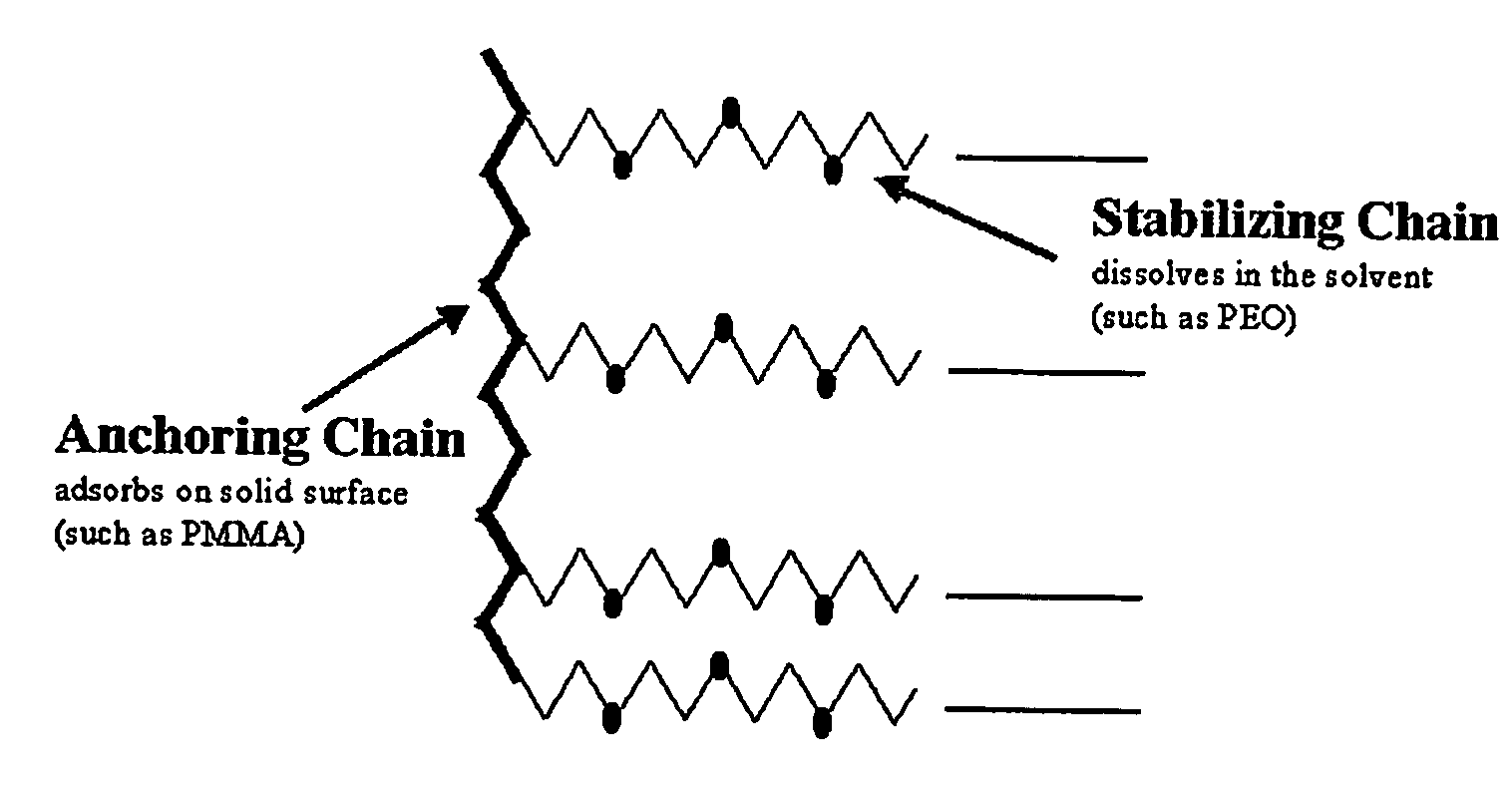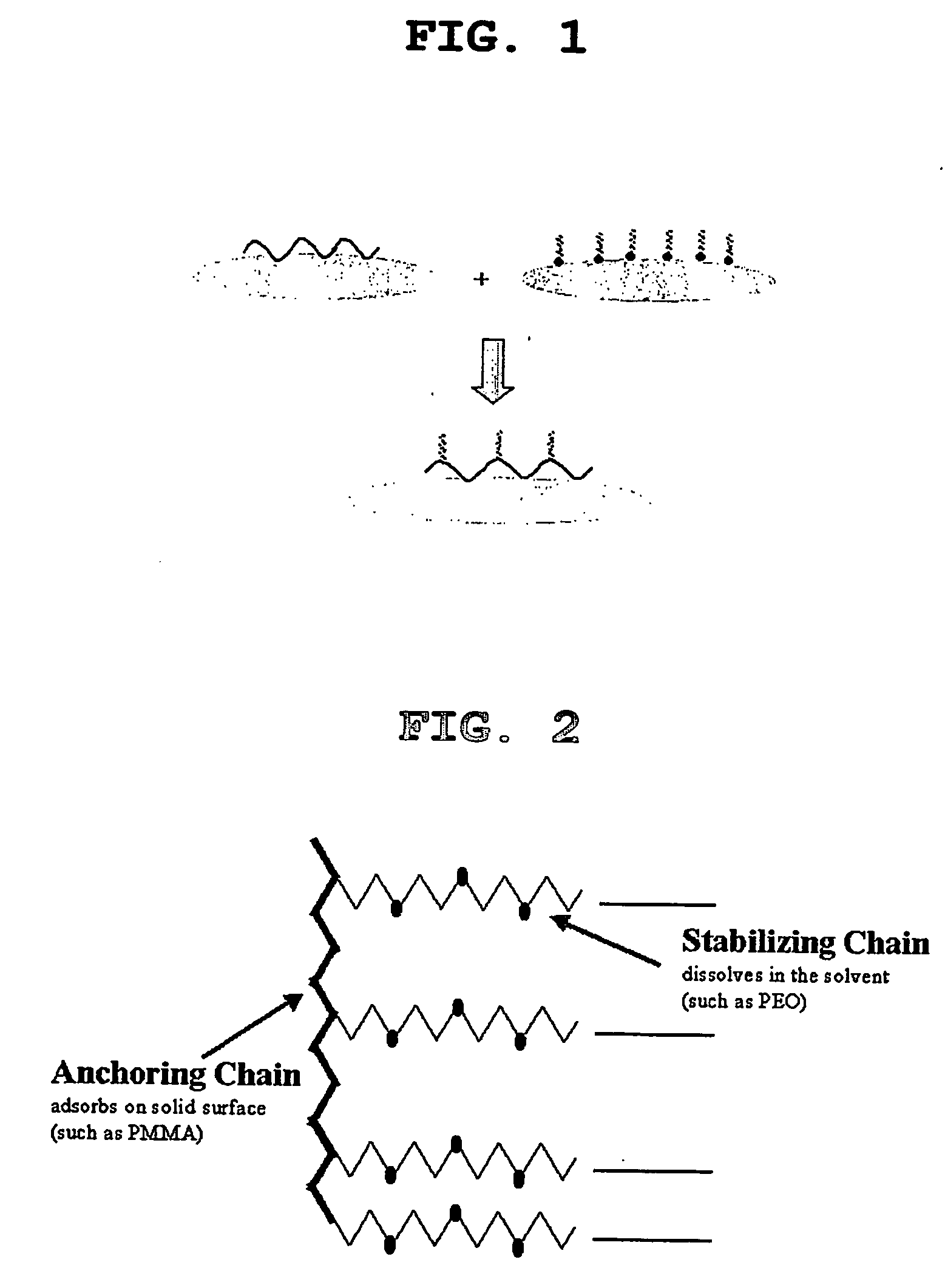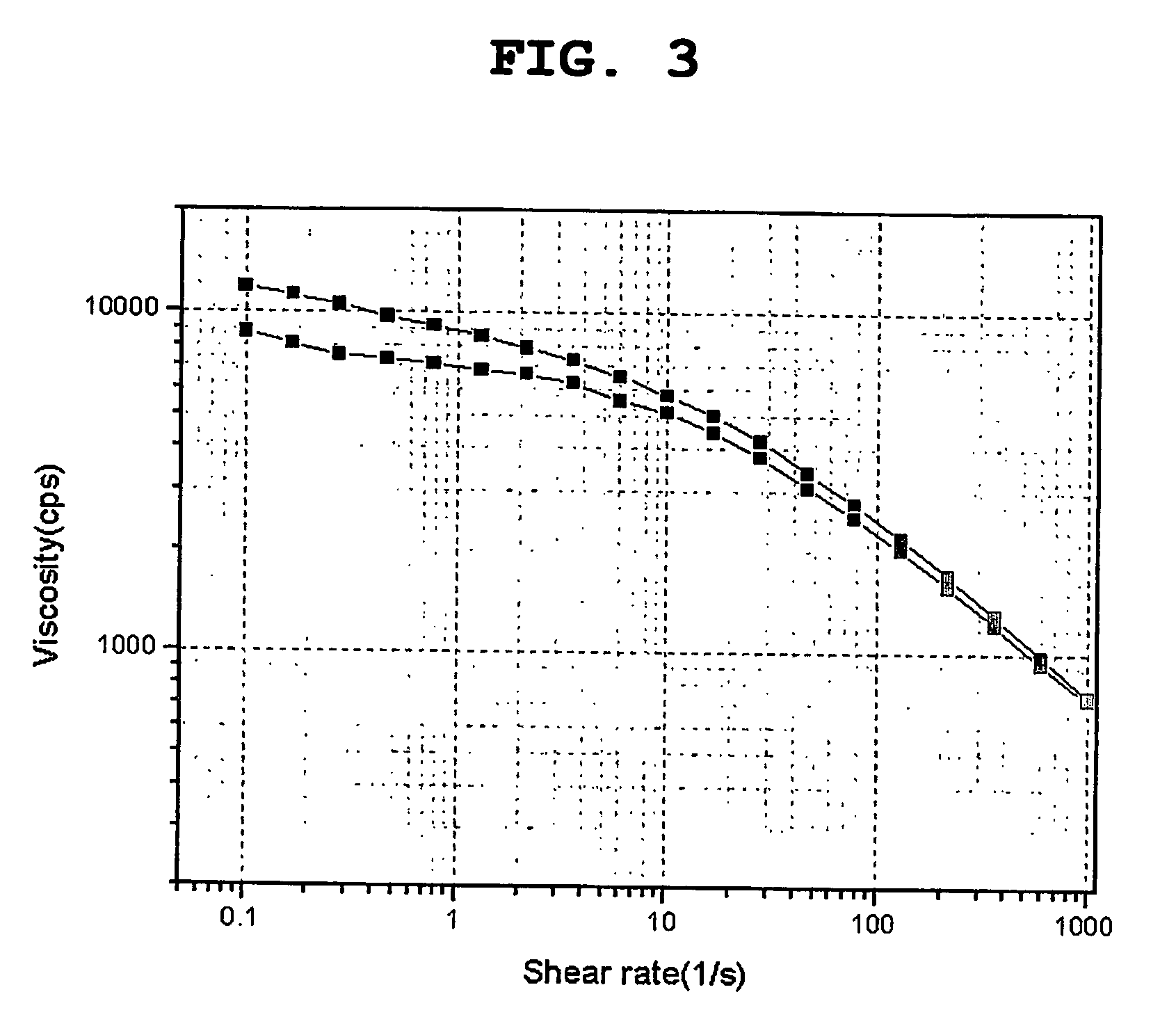Constitution of the dispersant in the preparation of the electrode active material slurry and the use of the dispersant
- Summary
- Abstract
- Description
- Claims
- Application Information
AI Technical Summary
Benefits of technology
Problems solved by technology
Method used
Image
Examples
example 1
[0065] First, CMC powder (0.26 g; about 1 wt %) used as a thickener for the solution of electrode active material slurry was dissolved in 12.5 g of distilled water at 50° C. to prepare CMC solution. Next, 25 g (about 97 wt %) of graphite powder used as an electrode active material was introduced into a mortar, the CMC solution prepared in advance was poured gradually, and then stirred with a pestle for about 10 minutes. After completion of stirring, 0.51 g (about 1.9 wt %) of SBR solution used as a binder was introduced into the mortar and stirred for additional 5 minutes. Finally, 0.026 g (about 0.1 wt %) of PEO-PMMA copolymer (available from Unichema in the name of Hypermer) used as a dispersant was added and stirred, while adding 43.5 g of distilled water gradually. And then, the solid content of the electrode active material slurry was adjusted to 43 wt %.
[0066] The viscosity change for the electrode active material slurry prepared as the above was measured by using Thermo Hakk...
PUM
 Login to View More
Login to View More Abstract
Description
Claims
Application Information
 Login to View More
Login to View More - R&D
- Intellectual Property
- Life Sciences
- Materials
- Tech Scout
- Unparalleled Data Quality
- Higher Quality Content
- 60% Fewer Hallucinations
Browse by: Latest US Patents, China's latest patents, Technical Efficacy Thesaurus, Application Domain, Technology Topic, Popular Technical Reports.
© 2025 PatSnap. All rights reserved.Legal|Privacy policy|Modern Slavery Act Transparency Statement|Sitemap|About US| Contact US: help@patsnap.com



